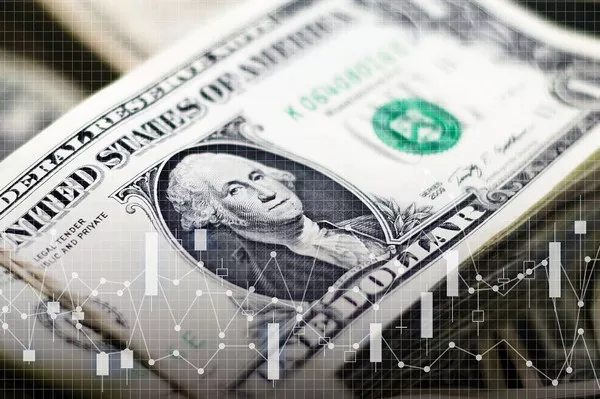The US dollar has been on a winning streak for some time now, gaining against almost all major currencies. In fact, it is currently at an almost three-year high against the euro, and has also gained significantly against the British pound, Canadian dollar, and Australian dollar, among others. There are several factors that have contributed to the strength of the US dollar in recent times.
1. Economic Growth
One of the primary reasons for the strength of the US dollar is the country’s strong economic growth. The United States economy has been growing steadily over the past few years, driven by a combination of a robust job market, increased consumer spending, and tax cuts. This has resulted in higher interest rates, which in turn makes the US dollar more attractive to investors. Higher interest rates increase the return on investments in US dollars, making it an attractive investment option for investors looking for safe-haven assets.
2. Political Stability
Another factor contributing to the strength of the US dollar is political stability. Despite a highly polarized political environment, the United States remains a relatively stable democracy, with a well-established system of governance and rule of law. This provides investors with confidence that their investments are secure and protected, further driving the demand for US dollars.
3. Safe-Haven Status
The US dollar has traditionally been seen as a safe-haven currency, particularly during times of global uncertainty or market turmoil. This is because the US dollar is widely accepted around the world, and the United States is home to some of the largest financial institutions in the world. During times of crisis, investors often flock to the US dollar as a safe-haven asset, further driving its value.
4. Trade Tensions
The ongoing trade tensions between the United States and China have also played a role in the strength of the US dollar. The trade war has resulted in tariffs being imposed on goods traded between the two countries, which has led to a reduction in trade volumes and slowed global economic growth. As a result, investors have sought refuge in safe-haven assets such as the US dollar.
5. Interest Rate Differentials
Interest rate differentials between the United States and other countries have also contributed to the strength of the US dollar. The Federal Reserve has been raising interest rates over the past few years, while other central banks around the world have kept their rates low or even negative in some cases. This has made the US dollar more attractive to investors, as they can earn higher returns on investments denominated in US dollars.
6. U.S. Treasuries
Another factor contributing to the strength of the US dollar is the demand for US Treasury bonds. These bonds are considered to be one of the safest investments in the world, and are backed by the full faith and credit of the US government. As a result, they are highly sought after by investors seeking a safe-haven asset. The demand for US Treasuries drives up the value of the US dollar, as investors need to purchase dollars to buy these bonds.
Conclusion
The US dollar is currently at a position of strength against most major currencies, driven by a combination of strong economic growth, political stability, safe-haven status, trade tensions, interest rate differentials, and demand for US Treasuries. While there may be short-term fluctuations in the value of the US dollar, these underlying factors suggest that it will remain strong in the long term. Investors looking for a safe and stable investment option should consider adding US dollars to their portfolio, either through currency trading or through investments in US stocks or bonds.


